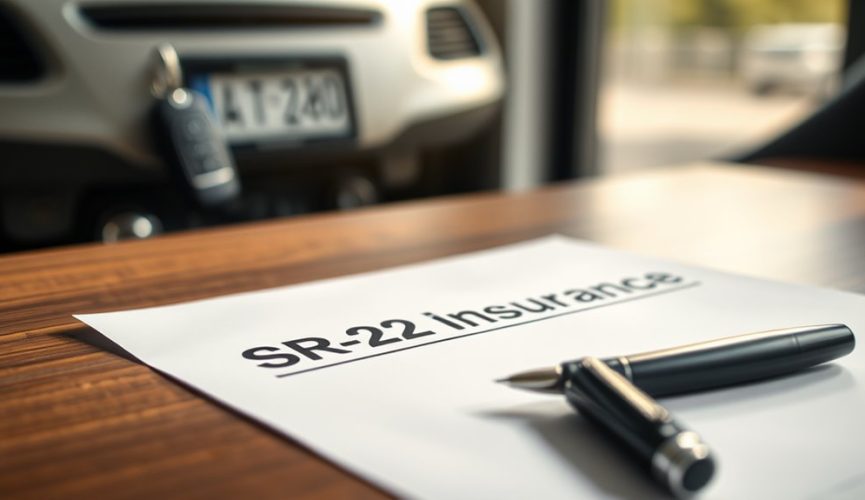You might think that SR-22 insurance is just another type of policy, but it’s actually a certificate of financial responsibility for high-risk drivers. If you’ve faced serious traffic violations, like a DUI, you likely need one to keep your driving privileges. Understanding who requires this certificate and why it’s essential for legal compliance can greatly impact your driving future. So, what exactly does this entail, and how long do you need to maintain it?
SR-22 insurance is an important document for drivers labeled as high-risk due to certain traffic offenses, like DUI or reckless driving. This certificate of financial responsibility isn’t an actual insurance policy but serves to prove that you maintain the minimum auto liability coverage required by your state. When you’re deemed high-risk because of a traffic violation, the state may mandate you to file an SR-22 to guarantee compliance with insurance regulations.
SR-22 insurance is essential for high-risk drivers to prove compliance with state auto liability coverage requirements.
If you’ve been convicted of DUI or DWI, or if you’ve received multiple traffic violations, you might need to get an SR-22. Other circumstances, like reckless driving or having an uninsured accident, can also trigger this requirement. It’s essential to understand that if your insurance lapses during the SR-22 period, your insurance company must report this to the state, which could lead to license suspension. Additionally, finding affordable SR22 insurance after a DUI can be challenging, but it’s crucial for managing your expenses.
If you don’t own a vehicle, you can still obtain a non-owner SR-22 policy, allowing you to drive legally while meeting state requirements. The filing process for an SR-22 begins with your insurance company, which files the necessary paperwork with your state’s Department of Motor Vehicles (DMV). Generally, there’s a one-time filing fee associated with this process, but keep in mind that it varies by state and insurance provider.
While the filing is largely electronic now, some insurers may still submit it via mail. However, remember that your SR-22 requirement doesn’t end with the filing fee; you may face increased insurance premiums as a result of your high-risk status. There are different types of SR-22 forms based on your situation. An owner certificate covers vehicles you own, while an operator certificate is for those who drive vehicles not owned by them. An owner-operator certificate provides coverage for both owned and non-owned vehicles.
Not every insurance company offers SR-22 coverage in each state, and it’s common for rates to increase considerably due to the perceived risk of insuring someone with an SR-22. Typically, you’ll need to maintain an SR-22 for about three years, though this duration can vary depending on your state and the nature of your offense. In specific cases, like a DUI conviction, the requirement may stretch longer. Maintaining continuous coverage is critical; if your policy lapses, the state will be notified, which could lead to severe consequences, including license suspension. Costs associated with an SR-22 can add up. You’ll likely face increased premiums due to your high-risk categorization by insurers, along with the initial filing fees.
Depending on your state, you might also need to fill out additional forms, such as the FR-44, particularly in Virginia and Florida. State laws dictate the duration and type of SR-22 you need, and compliance can differ considerably across locations. Understanding these regulations is essential for steering your high-risk driver status effectively.
Conclusion
In conclusion, SR-22 insurance is vital for high-risk drivers needing to prove financial responsibility after serious traffic violations. If you’ve faced issues like DUIs or multiple offenses, this certificate is your ticket to getting back on the road legally. Remember, keeping your SR-22 up to date is key, as it can feel like you’re walking on thin ice. By understanding your obligations, you can navigate the requirements and regain your driving privileges smoothly.

